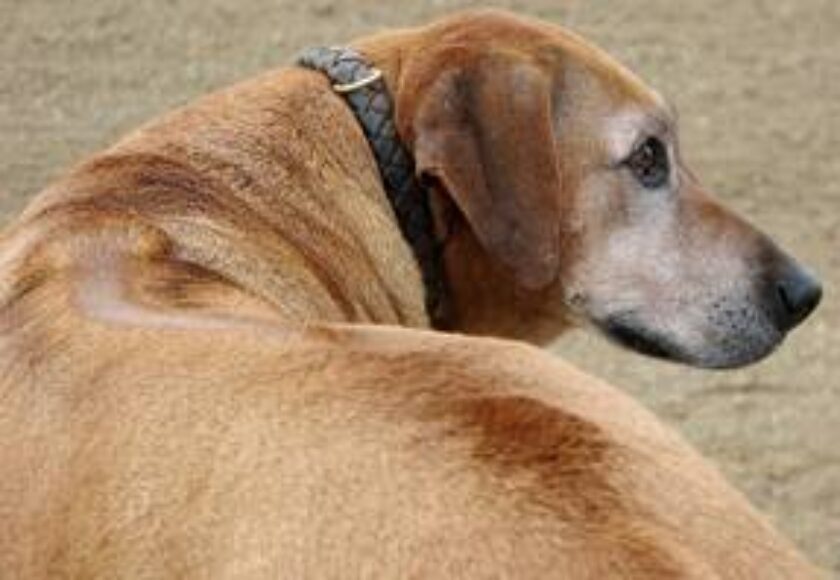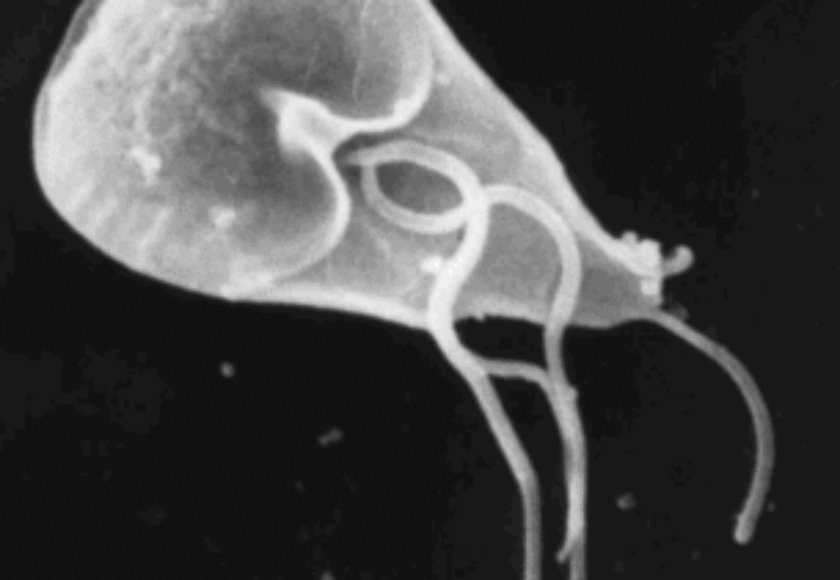Rectal prolapse occurs when the rectum, which is the last part of the intestines, gets turned inside out (everted), and sticks out of the anus. It looks like a red or pink tubular structure sticking out of the area from which your pet normally poops. It can also be crusty, ooze, or be a dark color if it has been around for a while. Rectal prolapse is not the same thing as hemorrhoids, which are swollen veins from the rectum that bulge out of the anus.
Why a Prolapse Happens
Prolapse can occur after a pet has been straining to poop for a while. Some of the most common reasons this can happen is if the pet has intestinal worms, is dehydrated, constipated, has diarrhea or loose stool, or has an intestinal blockage such as a tumor or has eaten an object that he is having trouble passing. Over time, straining leads to weakening of the structures that keep the rectum in place, causing the rectum to stick out through the anus.
Other Symptoms
If your pet has a rectal prolapse, you may also have noticed that he has been spending a lot of time trying to poop recently. An example of straining is standing in the classic, “hunched” posture used for emptying the bowels for longer than usual. It can also mean pooping more times than usual, even if he is able to finish quickly. You may also have seen an unusual change in the poop, such as being small and dry, looser than usual, or covered in intestinal worms. If you haven’t noticed any change in regular habits, either because keeping an eye on your pet’s bathroom habits is gross or because you have a sneaky pet that hides in order to go, it isn’t a big deal. Your veterinarian will know what to do.
Diagnosing a Rectal Prolapse
To officially diagnose a rectal prolapse, your veterinarian will give a pretty thorough physical examination, including a rectal exam in which they feel the prolapsed tissue. A fecal sample will likely be taken to check for worms and other intestinal issues. If a blockage is suspected, x-rays and/or an abdominal ultrasound may be necessary.
Treatment
To treat the prolapse, the vet will have to carefully clean the area before replacing it back into its original position. If it is swollen, additional medications or solutions may need to be applied to shrink the prolapse. Sometimes sedation or anesthesia is needed because a prolapse can be painful, especially if it becomes infected.
If the prolapse can be replaced, the vet may tie a “purse-string” suture around the anus to keep the opening small and prevent the rectum from prolapsing again. This fix is temporary until your pet heals. The suture will need to be removed later (your vet will tell you when), but it is important that you don’t let your pet chew the area or the suture may break. Antibiotics and pain medications may be sent home, as well as an e-collar, to ensure the rectal tissue heals properly.
Occasionally, a rectal prolapse cannot be replaced, or the tissue is too damaged. In these cases, surgery will be necessary to either remove the damage tissue (called a resection and anastomosis) or tack the rectum into the body wall from inside the abdomen (called a colopexy).
In addition to treating the prolapse, your veterinarian will also want to treat the cause of the prolapse (e.g., treat for intestinal worms). Stool softeners may also be prescribed for a short period to keep your pet from straining. Most pets improve and do not continue to have issues once the rectal prolapse heals. If you have any questions or concerns about your pet’s diagnosis and treatment, give your vet a call so they can guide you further.

